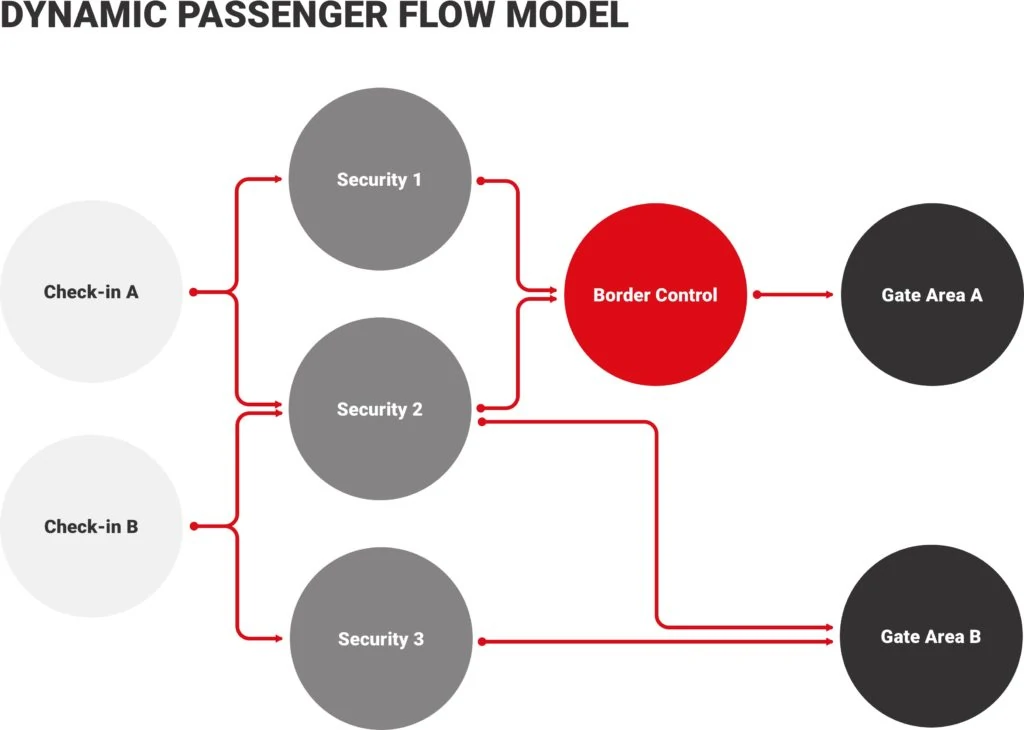Elevating Airport Efficiency and Growth Through Data Analytics
Better utilization of data analytics for airports plays a pivotal role in helping airports accommodate the surging passenger volumes and future-proof their operations. Current predictions point out a significant surge in air travel within the next 10-15 years, nearly doubling the current figures. This important growth presents a challenge for airports globally, especially in Europe.
The growth in passenger numbers can be attributed to two primary factors: increased seat load factors or the deployment of larger planes on existing routes, and the introduction of additional routes to and from airports. Hub airports, in particular, experience an important influx of long-haul aircraft and connecting flights, leading to heightened growth during peak periods and lower intensity during off-peak hours.
Planning challenges
The uneven distribution of passenger traffic throughout the operational day poses challenges for infrastructure planning and investment. Many airports face constraints related to location or environmental regulations that limit their capacity expansion options. In such cases, optimization becomes crucial, demanding creativity, innovation, and a willingness to adapt. Amorph Systems, a leading software provider, partners with airports to address these challenges.

Data Analytics for Airports
AMORPH.aero specializes in offering comprehensive solutions for optimizing the whole passenger process, from check-in to boarding. With a wealth of experience in data-driven projects for airports, the company excels in analyzing airport data to set up crucial parameters. Through simulation, airport operators gain insights into the interdependencies of various checkpoints within the passenger flow. This approach enables incremental improvements across all stages while considering the overall performance of the passenger process flow. Amorph Systems emphasizes the extraction, transformation, and calculation of key performance indicators (KPIs) through machine learning, enhancing the value derived from data.
As airport infrastructure becomes smarter and more digital, the reliability of information sources is paramount. For instance, inaccuracies in waiting time measurements due to hardware errors can disrupt operations. Amorph Systems addresses this concern with SMARTUNIFIER, a software product that seamlessly integrates with diverse hardware using standard protocols and translates data into need-to formats, significantly reducing integration time and effort.
Connecting the silos
One of the major challenges in aviation is how scattered its stakeholders are, either processwise or due to their use of different IT systems. Standardization approaches such as the airport collaborative decision making (A-CDM) process have shown that collaboration and data analytics for airports have enormous optimization potential. Just imagine the achievements possible with the hitherto untouched combination of airside, landside, and baggage operations. It is therefore necessary to investigate the possibilities of interconnecting these silos and enabling the full potential of an airport-wide collaborative platform. This will require the involvement of IT and data exchange standards such as ACRIS to harmonize the data landscape and simplify access for stakeholders. AMORPH.aero already has the capacity to set up predictions for different types of parameters, such as passengers, bags, or cars at parking lots. With a predictive platform that can cover all types of processes, there is a basis for supporting optimization rules on top of these predictions. This enables users to link business processes and balance them according to the overall revenue optimization. This cross-coupling of entities should then work over several time horizons to cover long-term resource planning for day-of-operation decision making.
“A key element in success is strong collaboration with the airlines at the airport, to establish it as a gateway”

Helsinki case study
Finavia, the operator of Helsinki Airport, sees innovation as a major way to strengthen the airport in the context of competition from other growing hub airports. A key element in success is strong collaboration with the airlines at the airport, to establish it as a gateway for international routes and transfer connections. This traffic change requires efficient airport operations to keep connections stable and ensure that Helsinki remains a pleasant airport for passengers. With the Amorph Systems Flow Predictions, Finavia is in full control of adjusting processes and resources according to any upcoming changes, enabling it to make sure that operations run smoothly. With the Amorph.aero platform, Finavia is able to steer passenger flows and optimize resource allocation to keep waiting times to a minimum. Additionally, as part of the upcoming terminal extension at Helsinki, the transition phase between stages of the airport expansion plan can be evaluated. Matti Lehto, head of operations digitization at Finavia, says, “The Amorph.aero platform provides us with the up-to-date calculation of loads at process points such as security and border control, as well as very clear and understandable visualization of capacity versus load. “This enables the terminal control operation to make better decisions and adjust resources in daily operation. We are also aiming for cloud implementation with the platform to enable easy and quick data sharing with our airline customers and other stakeholders, to further enable better decision-making in each stakeholder subprocess.” Finavia could therefore use the Amorph Systems toolkit to prepare scenarios and evaluate in advance the potential impact of the infrastructure changes. Operational scenarios or even the expected retail revenue of future schedules can be reflected and prepared up-front. Explore how data analytics for airports drive growth and operational excellence in the aviation industry.

Original Article from the Passenger Terminal World ANNUAL SHOWCASE 2020.